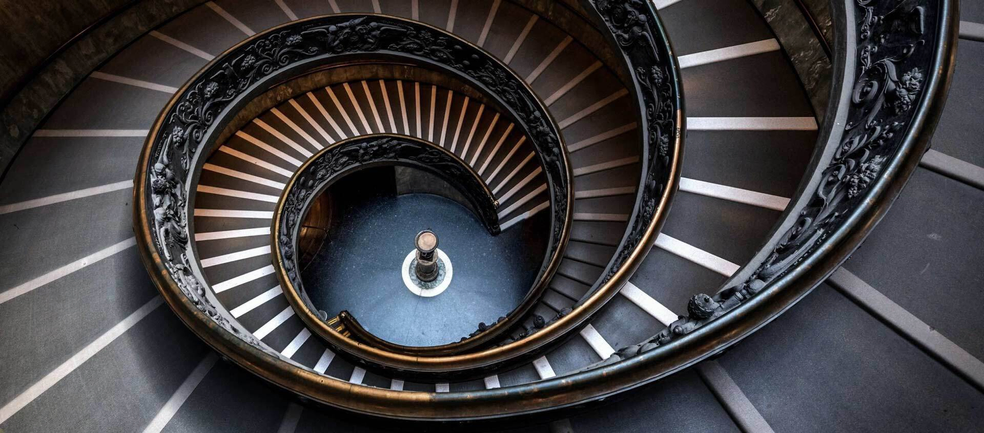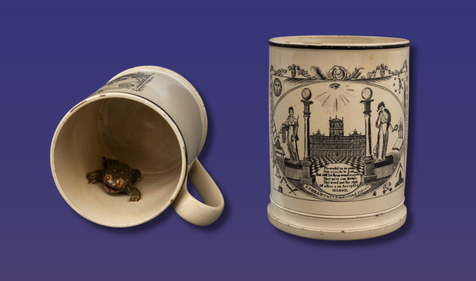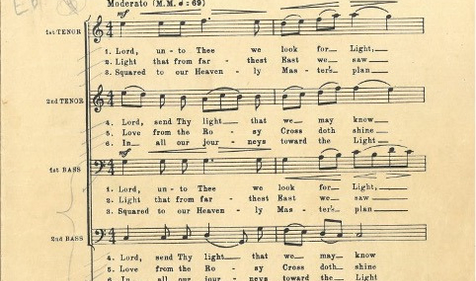The Masonic Winding Staircase is a central symbol in Freemasonry’s second degree of Fellowcraft, referring to the allegorical ascent to the Middle Chamber.
Freemasonry has used symbols to represent the Craft for centuries. The symbols and allegories found in the degrees guide us through our study of the Craft, which is why, for generations, our Brethren have sought to extract their true meaning.
In the Blue Lodge, we begin our path to self-improvement and commit to upholding the virtues of Brotherly Love, Relief, and Truth that ground our fraternity. In the first three degrees, the architecture of King Solomon’s Temple represents the path of development we all journey through as Masons. While it is only mentioned once, the Winding Staircase has earned a prominent role in the second degree and, subsequently, the spiritual journey of every Brother.
Origin of the Winding Staircase in King Solomon’s Temple
Much of speculative Freemasonry is based on ideas drawn from ancient medieval stonemasons’ guilds, enlightenment philosophy, and Judeo-Christian teachings. As such, it is no surprise to learn that the Masonic allegory of King Solomon’s Temple is derived from the Hebrew Bible.
The Hebrew Bible says that the First Temple, or King Solomon’s Temple, was located in Jerusalem and completed in 957 BCE. Solomon’s father, David, was told by God to build a great Temple to house the Ark of the Covenant, an ornate chest holding the two stone tablets of the Ten Commandments. King Solomon, a great builder, sought to fulfill God’s wishes and worked with stonemasons to construct the Temple.
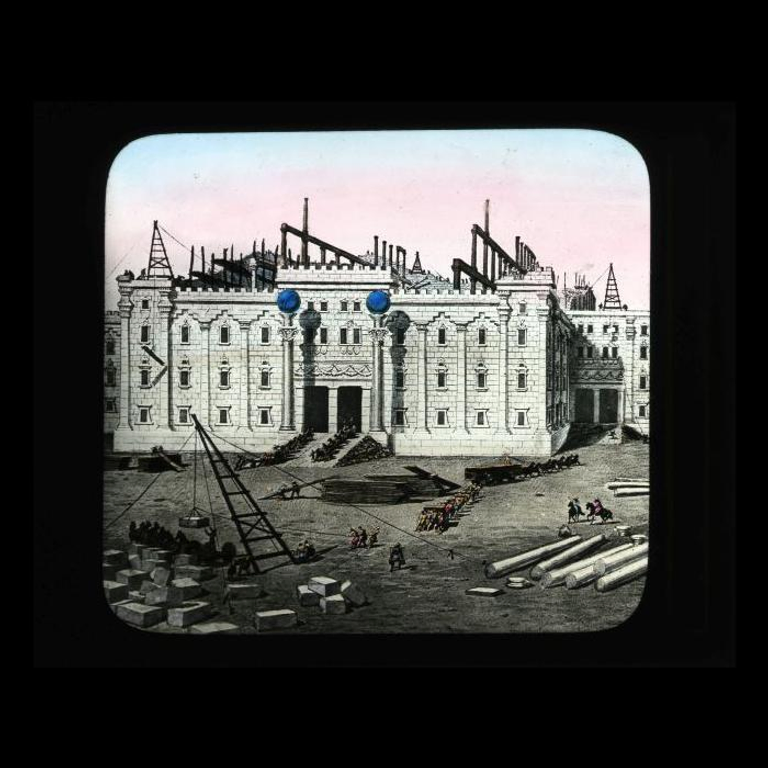
While scripture reveals the temple was later destroyed by the Babylonians and King Nebuchadnezzar II, the Jews ultimately returned to the Temple’s ruins to rebuild the Second Temple. Some Masonic historians theorize that the European craftsmen guilds from which Freemasonry is thought to have arisen were inspired by the story of King Solomon’s Temple, taking pride in the notion that such marvelous architecture was built by “them.” As such, they integrated the temple imagery into their ceremony of initiation.
Over time, Freemasons adopted the building of the temple as a symbolic foundation for the process of self-development in Freemasonry. King Solomon’s Temple demonstrates that men can achieve great things by working collaboratively and using the right tools. Freemasonry turns the physical building of the temple into a metaphor for the possibilities of self-growth and enlightenment. By following the teachings of the three Blue Lodge degrees, Brethren can build their spiritual temple and become better men.
To the Middle Chamber: The Winding Staircase’s Significance in Masonic Ritual
In Masonic ritual, the Winding Staircase is the central feature of the second degree. Every Brother becoming or who has become a Master Mason is familiar with this ritual, in which the Fellowcraft must “advance through a porch, by a flight of winding stairs to the middle chamber, there to receive his wages.” While these structures – the porch, stairs, and chamber – were once part of King Solomon’s Temple, they are used here as spiritual and intellectual markers of a candidate’s progress in the Craft.
In speculative Masonry, the second degree represents the symbolic growth from youth to manhood as a Brother accepts greater responsibility within the fraternity. Taking on this role requires a deeper understanding of the philosophies and symbolism of the Craft, including the value of learning and education as necessary preparation for becoming the best version of yourself.
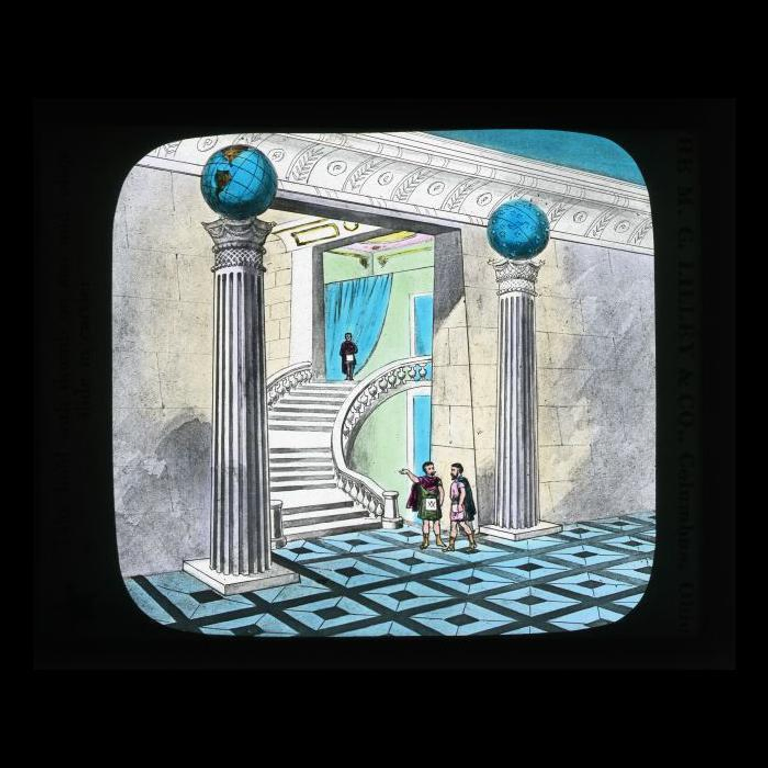
The Fellowcraft degree represents a candidate's growth into adulthood and is where his intellectual education begins. Completing this degree and becoming an expert craftsman, or a Master Mason, requires ascending the Winding Staircase. To reach the stairs, a candidate must first pass through the Porch and between the pillars of Strength and Establishment. He must leave behind the irrationality and ignorance of youth and become a learned man. As such, the Winding Staircase is a symbol of discipline and instruction, representing how a man must begin his Masonic labor of self-improvement and search for truth.
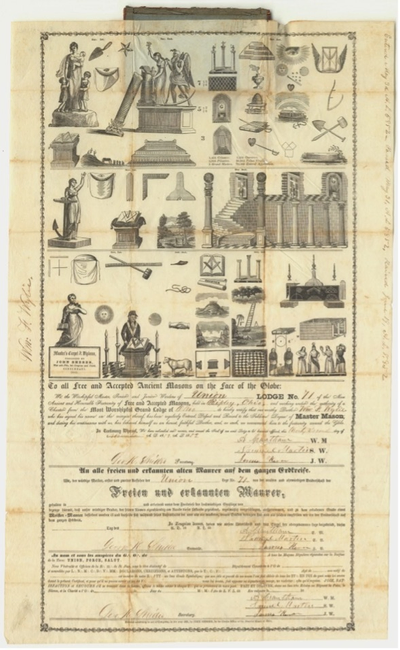
The Masonic Winding Staircase: Meaning to Freemasons Today
For many Freemasons, The Fellowcraft degree is among the most moving rituals in our fraternity. It teaches a man the value of an informed mind and helps him assume his role as a good citizen, friend, and family man. The mental and spiritual rigors that accompany the ascent of the Masonic winding staircase aim to deepen the candidate’s connection to himself and, above all, teach him to be just with all mankind. A Freemason has a duty to himself and his Brethren to become better and build a better world. This means he cannot stand still, he must commence his Masonic labor, climb the stairs to the Middle Chamber and become an example of enlightenment and wisdom.
It's fascinating that the Winding Staircase, a symbol that only appears once in Masonic ritual, has earned such prominence. Even in scripture, it appears in a single verse in the sixth chapter of the First Book of Kings: “The door for the middle chamber was in the right side of the house, and they went up with winding stairs into the middle chamber, and out of the middle into the third."
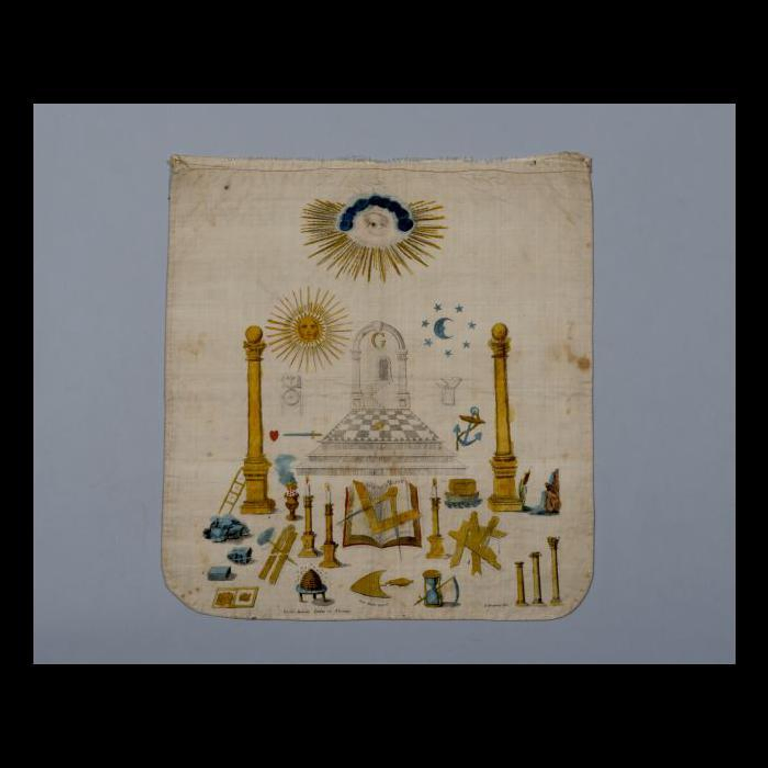
Over the centuries, tracing boards, Masonic aprons, and other fraternal artwork have depicted the Winding Staircase. That this image is a foundational element of Masonic teachings today is a testament to the power and beauty of Masonic ritual, in particular the Fellowcraft degree.
Related Stories
Discover additional Scottish Rite blogs and news on this topic.
